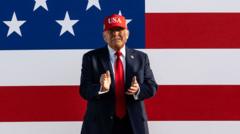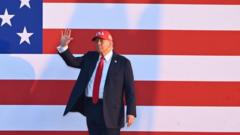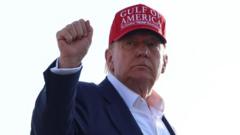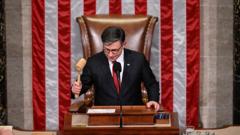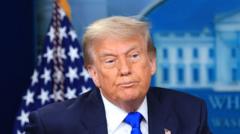**Beijing aims to foster economic stability while addressing ongoing trade imbalances with America.**
**Negotiations Shift as US and China Seek Common Ground in Trade Talks**

**Negotiations Shift as US and China Seek Common Ground in Trade Talks**
**Recent trade discussions signal a new phase in US-China relations, yet challenges remain.**
China has taken significant steps in trade negotiations with the United States, signaling a move towards resolution while facing ongoing challenges. Despite a history marked by tensions and tariff conflicts, both sides are now engaging in talks that could reshape their economic relationship. In a surprising turn, China has shown a willingness to negotiate tariff reductions for the benefit of its consumers.
Symbolizing this shift, US Treasury Secretary Scott Bessent stated after a two-day negotiation in Geneva that both nations are keen to maintain trade ties and avoid a full decoupling of their economies. Economists have responded positively, noting that the recent agreement, which lowers US tariffs on Chinese imports to 30% and Chinese tariffs on US goods to 10%, is more favorable than anticipated.
Tom Trump, the former US president, praised the discussions and characterized them as a “total reset”, while China’s tone has softened amidst ongoing economic pressures. The impact of the trade war has been felt deeply within China, where the economy is already grappling with issues such as low consumer confidence and high youth unemployment. Factory output is slowing, and declining consumer prices indicate a hesitant public.
Furthermore, the Chinese Commerce Ministry has acknowledged the recent agreements as vital to resolving economic differences, alluding to a desire for deeper cooperation. However, it warned against unilateral tariffs and reiterated the importance of mutual respect in negotiations, suggesting that while progress has been made, significant challenges remain.
China still maintains a substantial trade surplus with the United States, indicating that the underlying issues of trade imbalance and policy disagreements have not been fully addressed. Multiple lessons have been learned from these negotiations, establishing a framework for future meetings designed to enhance dialogue between the two nations.
While these initial steps may breathe optimism back into the global market, analysts caution that the fundamental trade disagreements persist. Thus, the economic confrontation has not ended but rather shifted from a battleground of tariffs to strategic discussions in conference rooms, marking only the beginning of a complex negotiation process.
Symbolizing this shift, US Treasury Secretary Scott Bessent stated after a two-day negotiation in Geneva that both nations are keen to maintain trade ties and avoid a full decoupling of their economies. Economists have responded positively, noting that the recent agreement, which lowers US tariffs on Chinese imports to 30% and Chinese tariffs on US goods to 10%, is more favorable than anticipated.
Tom Trump, the former US president, praised the discussions and characterized them as a “total reset”, while China’s tone has softened amidst ongoing economic pressures. The impact of the trade war has been felt deeply within China, where the economy is already grappling with issues such as low consumer confidence and high youth unemployment. Factory output is slowing, and declining consumer prices indicate a hesitant public.
Furthermore, the Chinese Commerce Ministry has acknowledged the recent agreements as vital to resolving economic differences, alluding to a desire for deeper cooperation. However, it warned against unilateral tariffs and reiterated the importance of mutual respect in negotiations, suggesting that while progress has been made, significant challenges remain.
China still maintains a substantial trade surplus with the United States, indicating that the underlying issues of trade imbalance and policy disagreements have not been fully addressed. Multiple lessons have been learned from these negotiations, establishing a framework for future meetings designed to enhance dialogue between the two nations.
While these initial steps may breathe optimism back into the global market, analysts caution that the fundamental trade disagreements persist. Thus, the economic confrontation has not ended but rather shifted from a battleground of tariffs to strategic discussions in conference rooms, marking only the beginning of a complex negotiation process.

